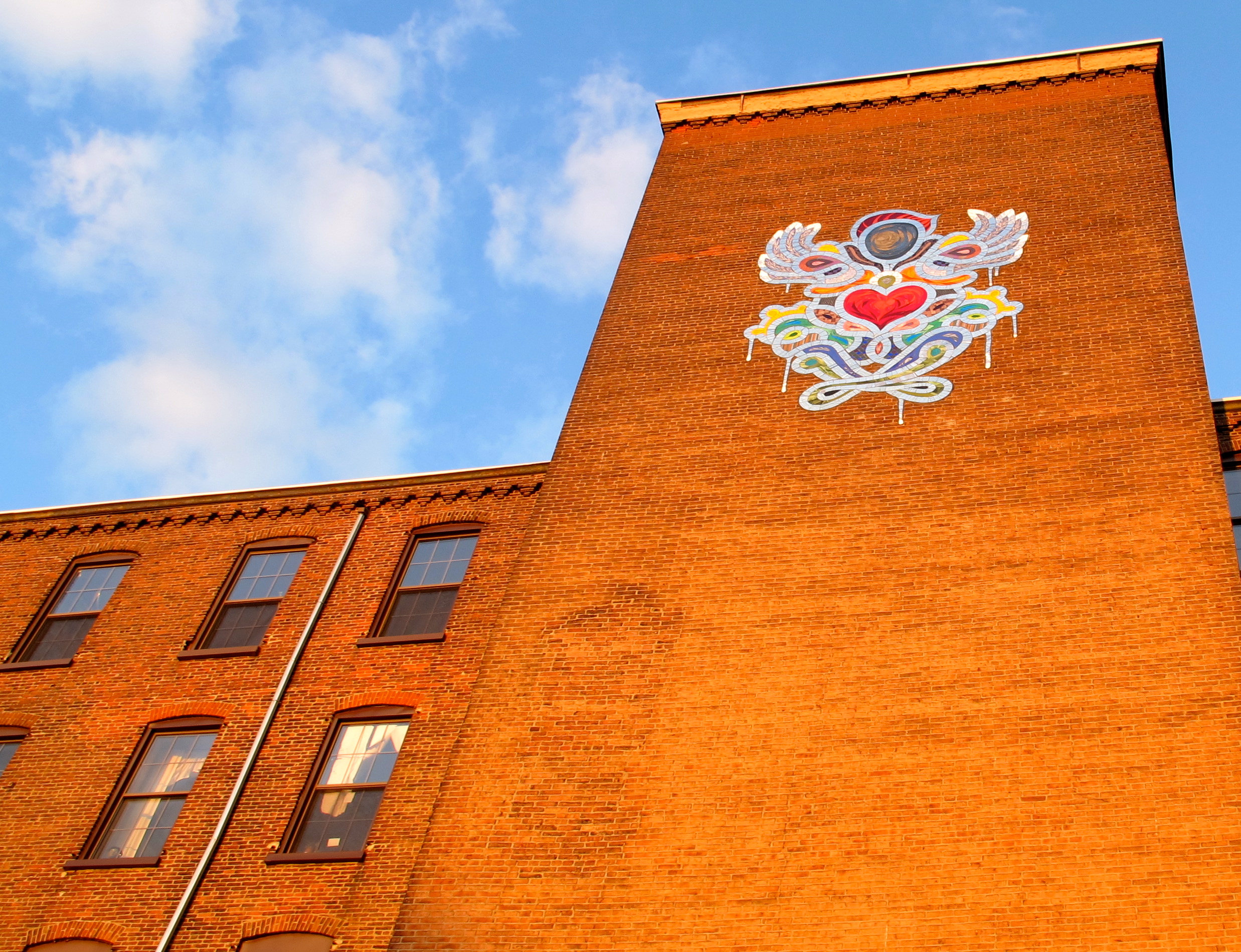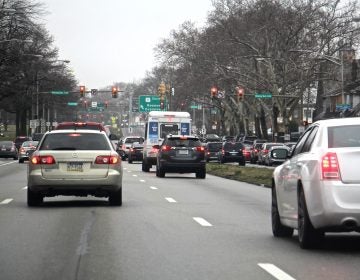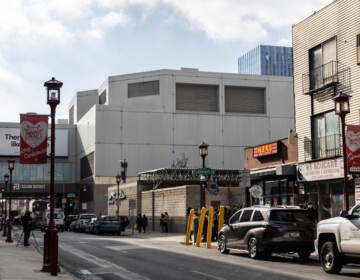Our City Invincible: On Creativity, Capacity, and Collaboration in the New Workshop of the World [TEDxPhiladelphia]

PlanPhilly is a partner for this year’s TEDxPhiladelphia event, and we’re sharing ways we think Philly is becoming a “New Workshop of the World”. For our last installment, here’s EOTS editor Ashley Hahn’s take on the flipside of vacancy: opportunity.
Philadelphia is a city of depth, grit, drive, and ingenuity. While Philadelphians struggle to overcome widespread physical abandonment and blight, we are also in a moment of profound reconstruction. In ways large and small Philadelphians are recycling parts of the city into something fresh and different, after enduring generations of loss.
In this bruised city, we really have two options: abandon ship or set up shop. Creativity is an empowering act of resistance, of choice and necessity.
If there is a thin silver lining that accompanies the bleak cloud of the city’s overwhelming physical vacancy, it is that there is room to breathe, space to proof new ideas, and craft a new course for neighborhoods. Our cursed vacancy, left from Philly’s boom years as a robust industrial city, could be the very resource we leverage to create a brighter future. In that sliver of light I find the most hope for Philadelphia.
Freedom in the Void
Punk writer Legs McNeil described the dereliction of 1970s New York City in the Ramones documentary End of the Century this way: “It was the end of white flight… and you really got the feeling like the parents had left and you could take over and do whatever you want.”
He could just as easily be describing Philadelphia’s recent history, and I think of that line – the parents had left and you could take over – constantly.
While Center City revived, other neighborhoods turned feral, gutted by abandonment and neglect, left to slowly slump into decay. Some hang in delicate balance, waiting. But there is plenty of life brewing in once fallow fringe neighborhoods, thanks to immigrants and creative types seeking affordable space to pursue their work.
Having room to create is a truly precious urban resource. It provides communities the chance to revive in a more self-determined way. Without physical room for new ideas cities risk becoming stagnant or boring instead of bustling centers of innovation, commerce, and culture.
The parents might not be coming back. If we can remain free of stifling paternalistic supervision by corporate and civic overlords, what will we make, build, test, and plant?
There’s an Earthship on an urban farm in Kensington, a Sustainability Workshop at the Navy Yard, Magic Gardens on South Street. The possibilities are vast.
Consider Lily Yeh’s work cultivating the Village of Arts and Humanities in Eastern North Philadelphia. In a recent episode of Philadelphia: The Great Experiment, Yeh says it perfectly:
“I came from Taiwan in 1963. I was looking for space. And I was looking to find who I was. And I started working in Philadelphia. It’s forgotten, it’s forsaken, it’s bleak. But it contains the seed ready for transformation, and that is a space of freedom. You can think, you can experiment, you can make a mistake.”
New Ideas Need Old Buildings
The same openness and fertility Yeh found are still abundant here. Some of best places for reinventing Philadelphia are the very spots that made it the original Workshop of the World: Philadelphia’s ex-industrial neighborhoods and mixed-use corridors where rent or whole buildings are cheap.
Frankford’s Globe Dye Works is being reshaped as a live/work campus for artisans and growing small businesses. North Third’s (N3rd) loft spaces have become an organic tech and design corridor with studios and coworking communities. The highly adaptable repurposed mills of Kensington, North Philadelphia, and the Eraserhood have made room for artists, and kept light industrial manufacturing alive. One is even becoming affordable housing for teachers. Many, many more of these buildings wait for brighter days activated by bright ideas.
Want to build high-tech prototypes of a new invention? Hit up NextFab’s space in a former warehouse on Washington Avenue. Want to do architectural ironwork? We’ve got old mill buildings at the ready. Need cheap start-up space with access to like-minded thinkers and tinkerers? Try out an ex-industrial campus like Penn’s South Bank to incubate your good idea.
These places are all old buildings reborn as new hives of productivity, driven by entrepreneurial collaborations and cross-pollination. In turn that new life has helped stabilize some neighborhoods that fell on hard times.
The discarded shells of our city’s industrial heritage make great platforms for creative enterprises of every type. Or, as Jane Jacobs famously opined, new ideas need old buildings. Not fussy fine things, but solid, adaptable, serviceable old places. Old buildings are important, of course, because they provide cheap space. They’re cheap in part because they don’t tend to carry debt. That helps.
Philly doesn’t have a lot of money and you can’t eat prototypes or art. But because we have space in spades, Philadelphians have opportunities to create a new future.
DIY becoming DIT
Beyond accommodating do-it-yourselfers, Philly is getting better at cooperating. DIY is becoming DIT – Do It Together.
In addition to natural collaborations among creative types, Philly’s doers are increasingly finding real partners in government and anchor institutions. The City is willing to help test out new ideas to improve our common civic life and to encourage new ventures – through the Office of New Urban Mechanics and even the Commerce Department. Philly’s powerful “eds and meds” have forged interesting partnerships for entrepreneurship, research, and community development.
Penn Medicine is integrating cancer research with vaccine manufacturing. The Navy Yard is home to pioneering, collaborative research on energy efficiency technology and retrofits at the Energy Efficient Building Hub. The Science Center houses the Department of Making + Doing, where STEAM Initiatives, Public Workshop, NextFab, and the Hacktory work together on civic projects involving electronics, fabrication, and design that empower communities to reshape the city.
For Philadelphia to flourish as a fuller, richer version of itself, creative minds – from programmers to professors, scientists to sculptors, architects to Afrofuturists – need room to invent, test, flop, and try again. Look at it that way and the city’s vacancy could become a liberating force. If we squander this opportunity we’re leaving our city’s future to be determined purely by market forces and the unimaginative. Philadelphia has the potential to become a more inclusive, active, and collaborative city: the once and future Workshop of the World.
ABOUT TEDXPHILADELPHIA
TEDxPhiladelphia offers interactive, immersive experiences for all participants. The not-for-profit group, licensed by TED, was created in the spirit of the TED conference and its mission, “ideas worth spreading.” While the 2014 conference is SOLD OUT, audiences everywhere can access a free live video webcast of speaker talks at www.TEDxPhiladelphia.org on March 28 and watch talks year-round after the event.
You can also join PlanPhilly and Penn for a tour of South Bank as part of TEDxPhiladelphia 2014 on Saturday.
WHYY is your source for fact-based, in-depth journalism and information. As a nonprofit organization, we rely on financial support from readers like you. Please give today.








